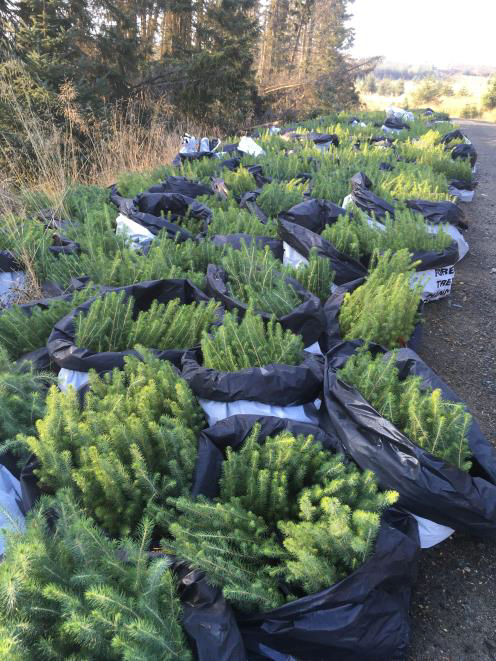The Trust welcomes creation of new woodland, particularly involving native species. Well-planned new woodland can help with carbon sequestration and also reduce loss of biodiversity. However, this proposal needs to consider the local context and also ongoing research into carbon sequestration by trees on organic soils.
Fencing
We are pleased to see that the proposal to construct a deer fence along the boundary with Wild Land Ltd has been revised. This fence was a considerable cost to the public purse and unnecessary. As the revised application states "sporting activities ceased in 2020 due to the vast reduction in deer numbers caused by neighbouring estate's deer cull policies".
As you know, management of deer numbers is a vital part of woodland creation but this is inadequately covered in the documents submitted. The new owner needs to come up with a comprehensive deer management plan involving, not fencing, but them playing their part in local efforts to reduce deer numbers. The proposed fencing is a cost to both the local bird life and the public purse. The application states that "the deer fence will not be marked with regards to Black Grouse as the Lek is over 2km away". This ignores the fact that both grouse and capercaillie disperse after breeding. Rare wader species are known to nest along the Milton Burn and are likely to suffer losses due to bird strike. If a fence has to be built, it should be marked to avoid grouse and other birds flying into it.

New deer fencing, with kissing gate © valenta cc by-sa 2.0
 |
Coniferous tree planting |
Tree planting versus natural regeneration
Wildland Ltd has shown that where deer have been reduced to under 2 per square kilometre there is widespread natural regeneration of trees and no need for planting. Far Ralia should be required to do the same as a pre-condition for any grant. Natural regeneration leads to a mosaic of different habitats, far more useful to wildlife.
Intensive planting will create woodland of a uniform age reminiscent of the plantations of the 1970s and 1980s, but this time with native trees. The biodiversity value of such woodland will be low. The potential benefits are further reduced by the proposal to plant mostly Scots Pine and Birch. The proposal should include plans to plant rarer willows which might actually help increase biodiversity on the site.
The proposed quantity of planting will require a substantial number of vole-guard tubes. The proposed quantity of plastic tubes will pollute and disfigure the landscape for years. Biodegradable tubes will, at least, disappear eventually.
Tree planting on organic soils — impact on carbon emissions
The application states that planting will be done by inverted mounding which will expose mounds of peat (40cm x 40cm) to the atmosphere. The application states this will enable the peaty soils to drain and help trees get established.
However, as the peat dries out it will rapidly degrade releasing carbon into the atmosphere. Current research at the James Hutton Institute shows that the carbon benefits of new woodland may not offset the release of carbon from disturbed soils for 30-40 years, assuming of course that the trees survive. This is a developing area of research, and the proposal needs to phase any planting over time such that as knowledge is gained and less intrusive methods are developed, any planting can take advantage of this.
As more evidence about the destructive impact of planting on peat is gathered, it is likely that the current policy on the depth of peat that can be planted will change. Given how all peat bogs develop over time, starting on bare ground and then over centuries accumulating to considerable depths, it makes sense to protect all peat and only to plant trees on ground without peat.
Recommendations
We recommend that the proposed fencing is considerably reduced in extent and that local jobs are created by the estate playing their part in culling deer.
We recommend that the proposal be revised to include a far greater proportion of land reserved for natural regeneration.
We recommend that biodegradable vole-guard tubes are used.
We recommend that the proposal adopts a phased approach so that as more is learnt about the consequences of planting trees on organic soils, the approach can be varied to reduce the carbon emissions due to planting.
We recommend that trees are only planted soils without peat.
The new woodland is being created as a carbon offset measure, where credits will be used to offset emissions in other places. The logic of carbon offsets is dubious; it would be far better to eliminate the emissions at source. As explained in the letter, there is evidence that planting trees in organic-rich soils, such as peat, is actually counter-productive. The reference to this important paper is given below.
Friggens et al. (2020), Tree planting in organic soils does not result in net carbon sequestration on decadal timescales, Global Change Biology, Wiley Online Library,
Please let the webmaster know if there are problems with viewing these pages or with the links they contain.